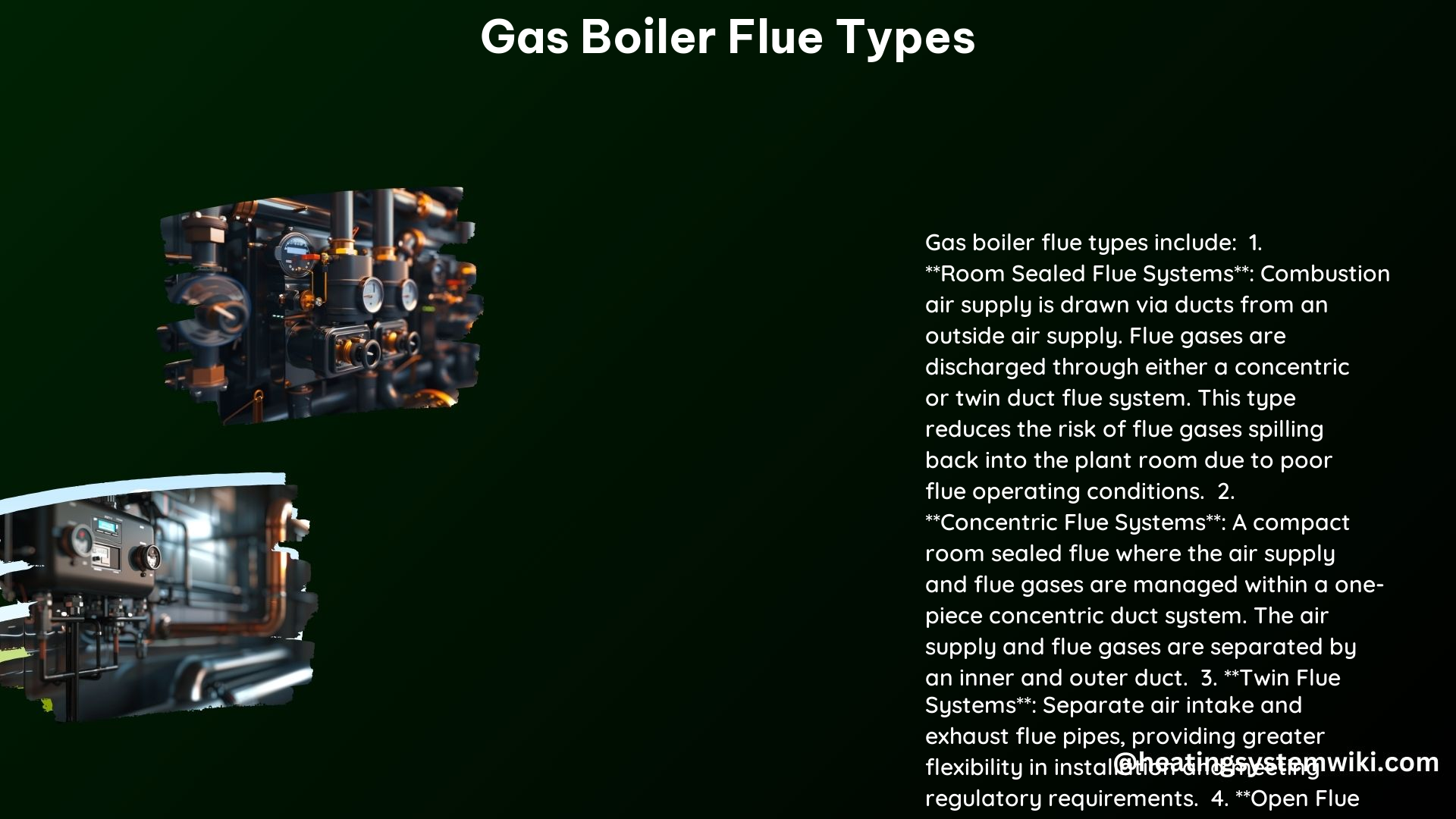Gas boiler flues are an essential component of a boiler system, ensuring the safe removal of waste gases and carbon monoxide from the boiler. These flues come in various types, each with its own unique characteristics and advantages. In this comprehensive guide, we will delve into the different types of gas boiler flues, their technical specifications, and the regulations governing their installation.
Types of Gas Boiler Flues
1. Round Flues
- Typically found on modern boilers installed in the last 15 years
- Use 22mm diameter pipes to carry gases away from the boiler
- Commonly used in horizontal flue installations
- Offer a sleek and compact design, making them a popular choice for contemporary boiler systems
- Capable of handling flue lengths up to 12 meters, depending on the boiler model and manufacturer specifications
2. Square Flues
- More common in older boiler models, often using 15mm diameter pipes
- May require upgrading to meet current safety standards and regulations
- Suitable for both horizontal and vertical flue configurations
- Typically have a maximum flue length of 3 meters, though some models may allow for longer runs
3. Horizontal Flues
- The most common type of gas boiler flue, exiting through the external wall behind the boiler
- Easier to install compared to vertical flues, as they do not require roof penetration
- Suitable for boilers with a maximum flue length of 9 meters, depending on the manufacturer’s specifications
- Must be installed with a minimum clearance of 300mm from any openings, such as windows or doors, to comply with safety regulations
4. Vertical Flues
- Used when the boiler is not fitted to an external wall
- Exit through the roof, often requiring additional parts and labor for installation
- Suitable for boilers with a maximum flue length of 15 meters, depending on the manufacturer’s specifications
- Require a minimum clearance of 600mm from any openings, such as windows or doors, to comply with safety regulations
5. Concentric Flues
- A one-piece system that manages both the air supply and the flue gases
- Compact and suitable for room-sealed appliances
- Available in a range of diameters, typically 60/100mm or 80/125mm
- Capable of handling flue lengths up to 15 meters, depending on the boiler model and manufacturer specifications
6. Twin Flue Systems
- Utilize separate air intake and exhaust flue pipes
- Provide greater flexibility in meeting regulatory requirements, especially in challenging installations
- Offer increased design options and the ability to route the air intake and exhaust pipes independently
- Suitable for boilers with a maximum flue length of 30 meters, depending on the manufacturer’s specifications
7. Open Flues (Conventional Flues)
- Use a single tube to remove the by-products of combustion
- Draw combustion air directly from the boiler’s surroundings
- Require adequate ventilation in the boiler’s installation location to ensure a sufficient air supply
- Typically have a maximum flue length of 12 meters, though some models may allow for longer runs
8. Closed Flues (Room-Sealed Flues)
- Use two pipes: one for air supply and one for expelling products of combustion
- Available in balanced and fanned flue types
- Provide a sealed system, ensuring that combustion air is drawn from the outside and waste gases are expelled safely
- Balanced flues use natural draught to expel waste gases, while fanned flues use a fan to power air into the boiler and remove waste gases
Technical Specifications and Regulations

- Flue extensions can vary in length, with some boilers requiring shorter or longer extensions to accommodate different installation scenarios
- Regulations govern the placement of flues, ensuring safe distances from windows, doors, and other openings to prevent the entry of exhaust gases into the building
- Flue guards are necessary if the flue is not at least 2 meters off the ground to prevent extraneous items from entering or blocking the system
Choosing the Right Flue
The choice of flue type often depends on the location of the boiler and the specific installation requirements. It is essential to consult with a Gas Safe registered engineer to ensure the correct flue type is selected and installed according to the relevant regulations. Factors such as the boiler’s output, the building’s construction, and the available space for the flue installation will all play a role in determining the most suitable flue type.
References
- Boiler Central. (n.d.). Boiler Flues – Ultimate Guide with Boiler Flue Regulations & Rules. Retrieved from https://www.boilercentral.com/guides/boiler-flues-everything-you-need-to-know-about-a-boiler-flue/
- Keston Boilers. (2023, April 26). Understanding Different Types of Boiler Flue. Retrieved from https://keston.co.uk/news/understanding-different-types-of-boiler-flue
- Hamworthy Heating. (n.d.). Commercial Boiler Flue Systems. Retrieved from https://hamworthy-heating.com/Knowledge-portal/Article-library/Commercial-boiler-flue-systems
- Heatable. (n.d.). What is a Boiler Flue and How do they Work? Retrieved from https://heatable.co.uk/boiler-advice/boiler-flues-what-they-are-how-they-work-and-what-type-you-ll-need
- WarmZilla. (2021, January 7). Boiler Flues Explained – Vertical vs Horizontal Boiler Flues. Retrieved from https://www.warmzilla.co.uk/blog/boiler-flues-explained
